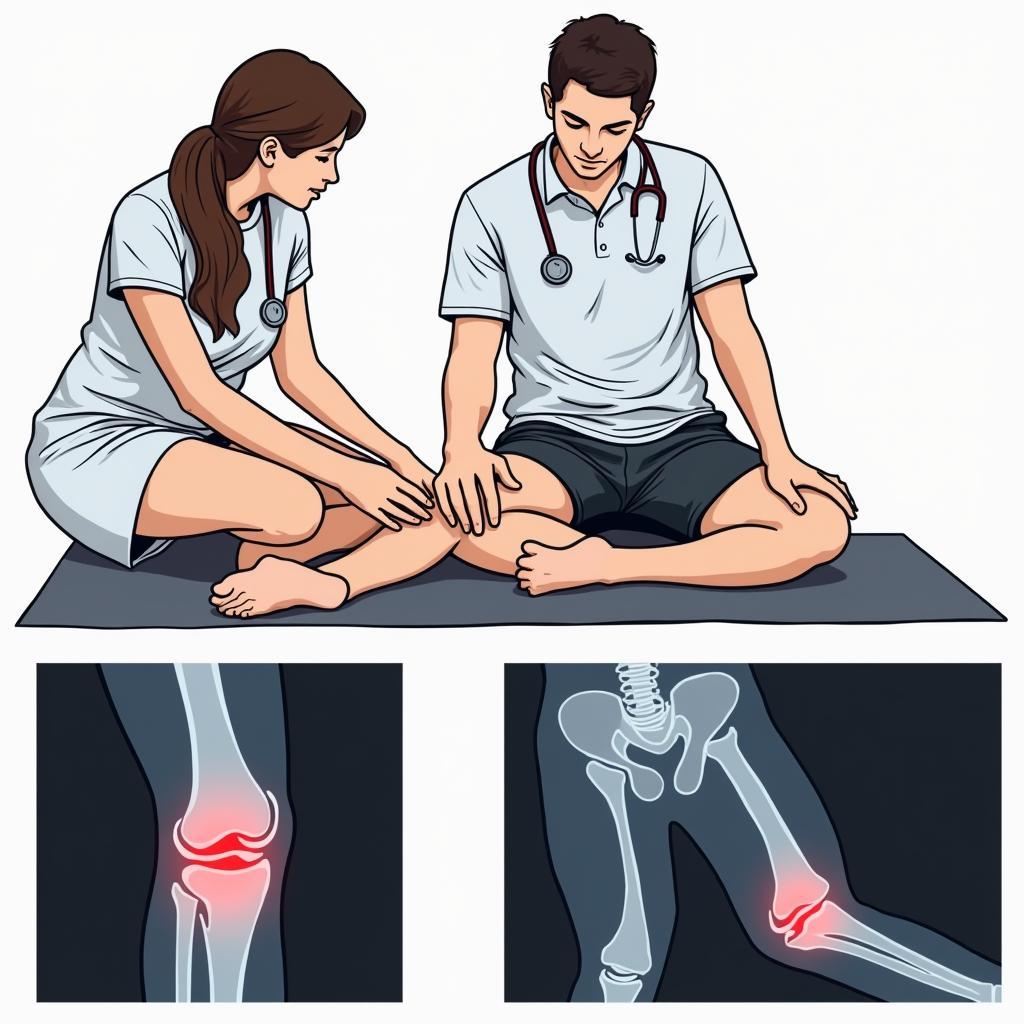Understanding FCL Knee Injuries
November 19, 2024Fcl Knee injuries are a common concern for athletes, especially in sports like football. This article will delve into the details of FCL injuries, exploring the causes, symptoms, diagnosis, and treatment options available. We’ll also discuss prevention strategies and rehabilitation protocols to help you understand how to protect your knees and recover effectively.
What is the FCL and Why is it Important?
The fibular collateral ligament (FCL) is a crucial ligament located on the outer side of your knee. It connects the femur (thigh bone) to the fibula (smaller bone in the lower leg). The FCL’s primary role is to provide stability to the knee joint, preventing it from buckling outwards. It plays a vital role in everyday movements like walking, running, and changing direction, and is particularly stressed during activities involving quick cuts and pivots, common in sports like football.
Common Causes of FCL Knee Injuries
FCL injuries often occur due to a direct blow to the inside of the knee, forcing it outwards. This type of injury mechanism is frequent in contact sports. A sudden change in direction or awkward landing can also strain or tear the FCL. Understanding these mechanisms is key to preventing these injuries.
Understanding the Grades of FCL Tears
FCL injuries are categorized into three grades based on severity:
- Grade 1: A mild sprain where the ligament is stretched but not torn.
- Grade 2: A partial tear of the FCL, resulting in moderate pain and instability.
- Grade 3: A complete tear of the ligament, causing significant pain and instability.
Recognizing the Symptoms of an FCL Knee Injury
Recognizing the symptoms of an FCL injury is essential for prompt diagnosis and treatment. Common symptoms include:
- Pain on the outer side of the knee
- Swelling and tenderness around the FCL
- A popping or snapping sensation at the time of injury
- Instability or a feeling of the knee giving way
- Difficulty straightening or bending the knee
- Stiffness and limited range of motion
Diagnosing an FCL Knee Injury
Diagnosing an FCL injury involves a physical examination by a medical professional. They will assess the stability of the knee and check for pain, swelling, and range of motion. Imaging tests, such as X-rays and MRI scans, can confirm the diagnosis and rule out other potential injuries.
The Importance of Early Diagnosis
Early diagnosis of an FCL knee injury is crucial for optimal recovery. Delaying treatment can lead to further complications and prolonged recovery times.
 Diagnosis of an FCL Knee Injury
Diagnosis of an FCL Knee Injury
Treatment Options for FCL Knee Injuries
Treatment options for FCL injuries vary depending on the severity of the tear.
- Grade 1 and 2 tears: Conservative treatment is usually sufficient. This may include rest, ice, compression, elevation (RICE), physical therapy, and bracing.
- Grade 3 tears: Surgical intervention may be necessary to repair or reconstruct the torn ligament, especially for athletes who require optimal knee stability for their sport.
Rehabilitation and Recovery
Rehabilitation is an essential part of the recovery process, regardless of the treatment approach. Physical therapy helps restore strength, flexibility, and range of motion in the knee. A structured rehabilitation program is crucial for a successful return to activity.
Preventing FCL Knee Injuries
Preventing FCL injuries involves strengthening the muscles surrounding the knee, improving flexibility, and using proper techniques during sports and other physical activities. Wearing appropriate footwear and protective gear can also help reduce the risk of injury.
Strengthening Exercises for Knee Stability
Regularly performing exercises that target the muscles supporting the knee can significantly improve stability and reduce the risk of FCL injuries.
“Proper warm-up and cool-down routines are vital for injury prevention,” advises Dr. Johan Cruyff, renowned sports physician and former professional footballer. “Focus on exercises that strengthen the hamstrings, quadriceps, and calf muscles to provide optimal knee support.”
Conclusion
FCL knee injuries can be debilitating, but with proper diagnosis, treatment, and rehabilitation, a full recovery is often possible. Understanding the causes, symptoms, and prevention strategies can help you protect your knees and maintain an active lifestyle. If you suspect an FCL injury, seek medical attention promptly to ensure the best possible outcome. Remember, taking care of your knees is essential for long-term health and well-being.
FAQ
- How long does it take to recover from an FCL injury?
- What are the long-term effects of an FCL tear?
- When can I return to sports after an FCL injury?
- What are the alternatives to surgery for an FCL tear?
- Is bracing necessary for all FCL injuries?
- What are some effective rehabilitation exercises for FCL injuries?
- How can I prevent FCL injuries in the future?
Need Help?
For any assistance regarding FCL knee or other sports-related injuries, please contact us: Phone Number: 0963418788, Email: [email protected] Or visit our clinic: 2M4H+PMH, Phường Nghĩa Thành, Gia Nghĩa, Đắk Nông, Việt Nam. Our customer service team is available 24/7.